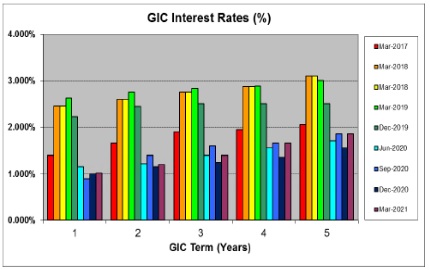Canadian interest rates were generally declining in 2024 after peaking in 2022-2023. The graph shows the top rates offered by over 25 institutions we deal with, for terms of 1 – 5 years (Source: Cannex Information Exchanges). The leftmost bar in each group shows the rate before Covid, the next bar the ultra-low Covid-era rates, both series showing the normal pattern of long-term rates being slightly higher than short rates. This pattern was inverted during the post-Covid rate increase phase, and just this year the 1-year rates have finally dropped below the 2-year rates, but longer terms are still below the 2-year rate. The market widely expects the Bank of Canada to cut short term rates a little further in 2025, since they are still well above pre-Covid levels.




